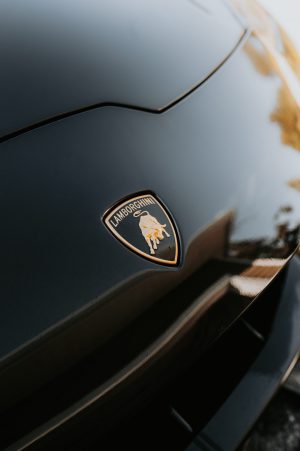
When it comes to automotive excellence, few names are as legendary as Lamborghini. The Italian car manufacturer has been producing some of the world’s most exclusive and exotic cars for over half a century, consistently pushing the boundaries of design, technology, and performance. From its humble beginnings in the 1960s to its current status as a leading producer of high-performance supercars, Lamborghini has built a reputation for creating some of the most exciting and innovative cars on the road today.
Lamborghini’s History
The story of Lamborghini begins with its founder, Ferruccio Lamborghini. Born in 1916 in the northern Italian town of Renazzo di Cento, Lamborghini showed an early interest in mechanics and engineering, and eventually became a successful businessman in the post-World War II era. In the early 1960s, Lamborghini became frustrated with the quality and reliability of his Ferrari, and decided to build his own car that would meet his high standards.
In 1963, Lamborghini unveiled the first car to bear his name, the 350 GT. Designed by the talented young engineer Giotto Bizzarrini, the 350 GT was a beautiful and powerful grand tourer that quickly established Lamborghini as a serious player in the world of high-performance cars. The car was powered by a 3.5-liter V12 engine that produced 280 horsepower, and could reach a top speed of 152 miles per hour.
Over the next few years, Lamborghini continued to expand its range of cars, introducing a series of exotic sports cars that were known for their striking designs and high-performance engines. In 1966, Lamborghini released the Miura, a mid-engine sports car that was considered one of the most beautiful and revolutionary cars of its time. Powered by a 4.0-liter V12 engine that produced 350 horsepower, the Miura could reach a top speed of 170 miles per hour and was capable of accelerating from 0 to 60 miles per hour in just 6.7 seconds.
The success of the Miura cemented Lamborghini’s reputation as a leader in the world of high-performance cars, and over the next few decades the company continued to produce a series of legendary cars, including the Countach, Diablo, and Murciélago. Today, Lamborghini is owned by the Volkswagen Group and continues to produce some of the world’s most exclusive and sought-after supercars.
Lamborghini’s Significant Achievements
One of Lamborghini’s most significant achievements was the development of the V12 engine. Ferruccio Lamborghini was a firm believer in the power and efficiency of the V12 engine, and his company’s engines quickly gained a reputation for their high performance and reliability. Today, Lamborghini’s V12 engines are among the most powerful and advanced in the world, capable of producing over 800 horsepower in some of the company’s most exclusive models.
Another significant achievement for Lamborghini was the development of the mid-engine sports car. While mid-engine layouts had been used in racing cars for decades, Lamborghini was one of the first companies to use the layout in a production car with the introduction of the Miura. The mid-engine layout allowed for a more balanced and responsive car, and became a hallmark of Lamborghini’s designs over the years.
Lamborghini has also been at the forefront of automotive design, producing some of the most striking and innovative cars of the past century. From the angular lines of the Countach to the futuristic curves of the Aventador, Lamborghini’s designs have always pushed the boundaries of what is possible in automotive styling.
Lamborghini’s Racing Success
While Lamborghini is primarily known for its high-performance street cars, the company has also had success in motorsports over the years. In the
1970s, Lamborghini developed a series of racing engines based on its V12 engine that were used in Formula One and other racing series. These engines were known for their power and reliability, and helped establish Lamborghini as a serious contender in the world of motorsports.
One of Lamborghini’s most successful racing ventures was the Lamborghini Miura Jota, a special version of the Miura that was developed specifically for racing. The Miura Jota featured a more powerful engine and a stripped-down, lightweight body, and was used in a number of racing events in the early 1970s.
In addition to its racing engines and special racing versions of its cars, Lamborghini has also been involved in a number of motorsports partnerships over the years. In the 1980s, Lamborghini worked with the French racing team Larrousse to develop a series of racing cars that were powered by Lamborghini engines. These cars were successful in a number of racing series, including the 24 Hours of Le Mans.
More recently, Lamborghini has become involved in a number of GT racing series, including the Blancpain GT Series and the International GT Open. In these series, Lamborghini has fielded a number of high-performance racing cars, including the Huracán GT3 and the Huracán Super Trofeo.
Conclusion
Lamborghini’s history is one of innovation, excellence, and a commitment to pushing the boundaries of automotive design and engineering. From its early days as a small Italian carmaker to its current status as a leading producer of high-performance supercars, Lamborghini has consistently set the standard for automotive excellence.
Whether it’s the iconic lines of the Countach, the raw power of the Aventador, or the racing heritage of the Huracán GT3, Lamborghini’s cars are a testament to the company’s dedication to excellence and innovation. With a continued focus on advanced technology, cutting-edge design, and unmatched performance, it’s clear that Lamborghini will remain at the forefront of the automotive world for many years to come.